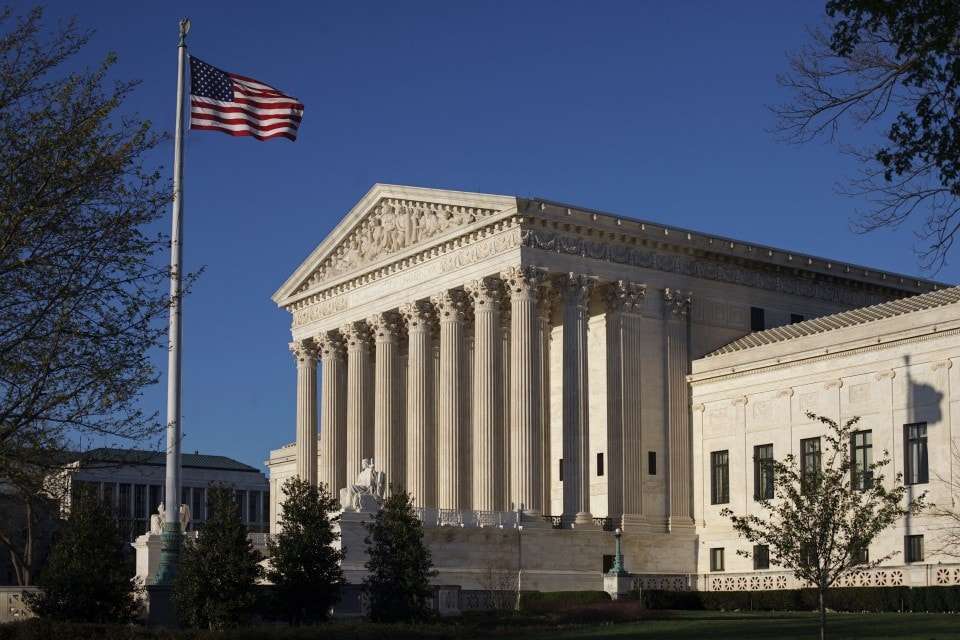The Volokh Conspiracy
Mostly law professors | Sometimes contrarian | Often libertarian | Always independent
The Supreme Court's 2016-2017 term - 'the calm before the storm'

The Supreme Court's just-concluded term was relatively quiet and inconsequential, as far as Supreme Court terms go. With only eight justices for most of the term, the justices avoided taking on too many difficult cases and appeared to make an extra effort to decide cases on the narrowest of grounds. Now that the court is back to nine justices, however, don't expect this to continue.
As Adam Liptak reports in the New York Times, October term 2016 produced an unusual degree of unanimity.
The last term was marked by a level of agreement unseen at the court in more than 70 years. That was a consequence of a lack of divisive disputes on social issues and hard work by the justices, who often favored exceedingly narrow decisions to avoid deadlocks. . . .
Less consequential cases seemed to produce consensus. According to data from Lee Epstein, a law professor and political scientist at Washington University in St. Louis, the percentage of cases decided by a 5-to-4 or a 5-to-3 vote was 14 percent, compared to an average since 1946 of 22 percent.
Professor Epstein also devised another measure of consensus, dividing the number of votes in support of the majority or plurality opinion by the total number of votes cast. The last term's rate, 89 percent, was the highest in at least 70 years.
While the degree of unanimity did not reach the levels of October term 2013, there were relatively few cases decided by a single vote (although two cases have been scheduled for reargument next term, presumably because they produced 4-4 splits). Some cases widely anticipated to divide the court along ideological lines, such as Trinity Lutheran Church of Columbia v. Comer, were instead decided by wider margins. Trinity Lutheran, which concerned whether a state could exclude a church from funding intended to enhance playground safety, was decided 7-2.
Liptak quotes my co-blogger William Baude reflecting on the term:
"It has been a quiet term, and that is a good thing for the country," [Baude] said. "Over all, this year the court was the least dramatic, and most functional, branch of government."
"We will look back on this term," he added, "as the calm before the storm."
That's for sure. When Liptak filed his story, the court had already agreed to hear cases concerning the Trump administration's immigration executive order, religious objections to providing services for same-sex weddings, the constitutional limits (if any) on partisan gerrymandering, the limits on state ability to maintain (or "purge") voter rolls, the application of the Fourth Amendment to historical cell-site data, the "waters of the United States" (aka "WOTUS") rule, the Alien Tort Statute and mandatory employee arbitration, as well as two immigration-related cases for which the court scheduled reargument (Jennings and Dimaya).
That would all be enough for any term, but there's more. Today the court agreed to hear several additional cases, including New Jersey Thoroughbred Horsemen's Association, Inc. v. NCAA, an important federalism case concerning the application and scope of the New York and Printz anti-commandeering rule. Although this case is about sports betting, it could have implications for disputes over sanctuary cities and other instances in which state or local governments refuse to cooperate with federal law.
Another case likely to reach the court next term concerns the constitutionality of the Securities and Exchange Commission's administrative law judges. As I discussed here, the U.S. Court of Appeals for the D.C. Circuit just split 5-5 on this question, and the U.S. Court of Appeals for the 10th Circuit concluded that the SEC's ALJs are unconstitutional. It's also reasonable to assume cases concerning various Trump administration initiatives could reach the court in time for the spring sittings.
With the full complement of nine justices, the court is unlikely to deadlock (barring the occasional recusal) and the justices may be less inclined to try and find common ground.
To top it all off, there will be continuing speculation as to whether Justice Anthony M. Kennedy (or any other justice) is ready to retire.
All this is a long way of saying that court watchers better rest up this summer. Come October, it will be time to strap in, as the next Supreme Court term is likely to be a doozy.


Show Comments (0)